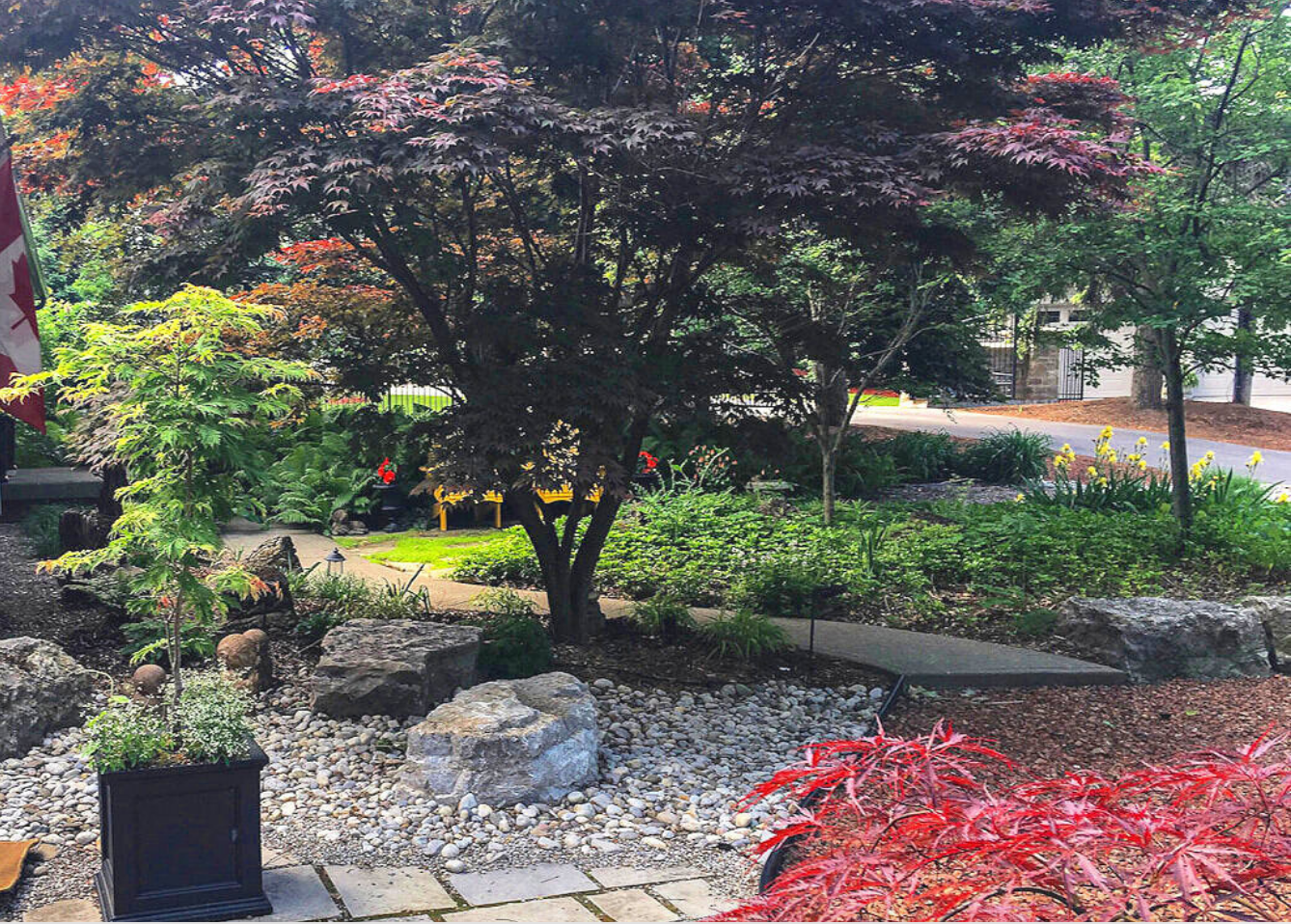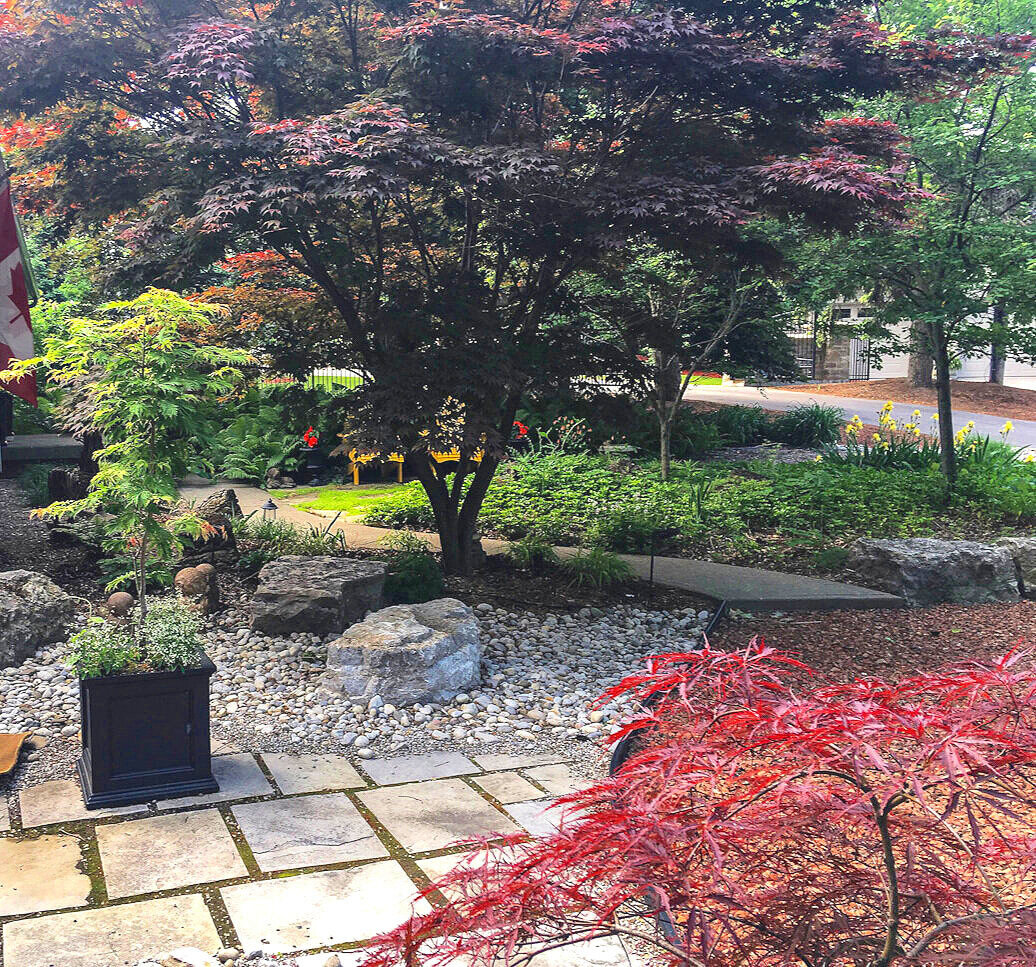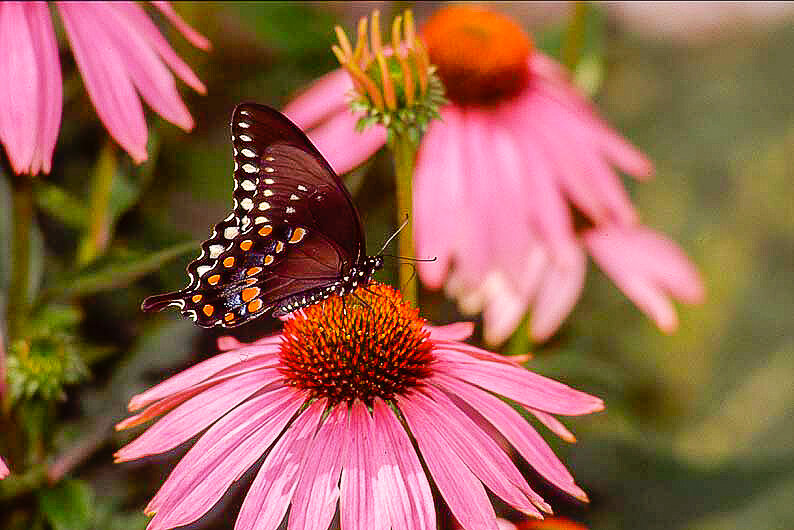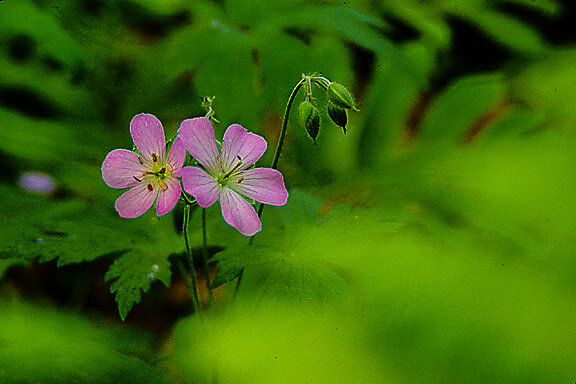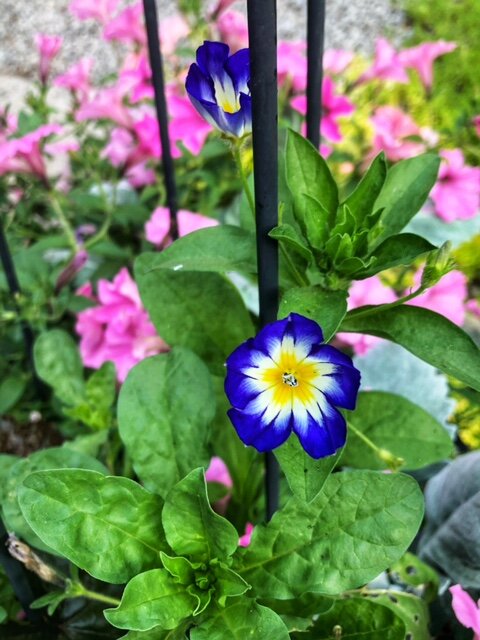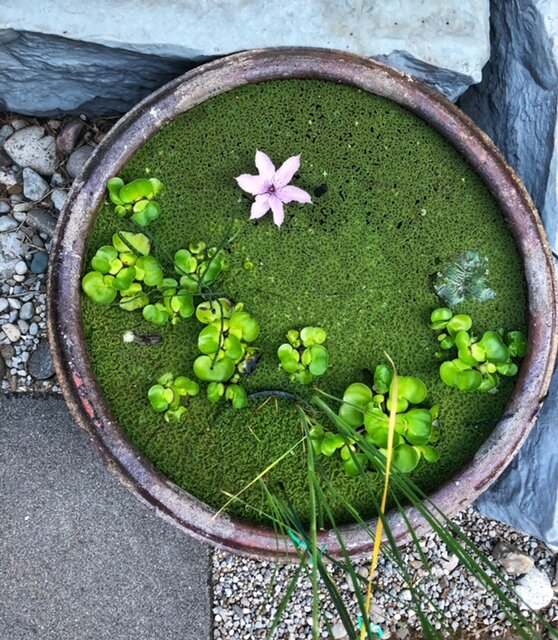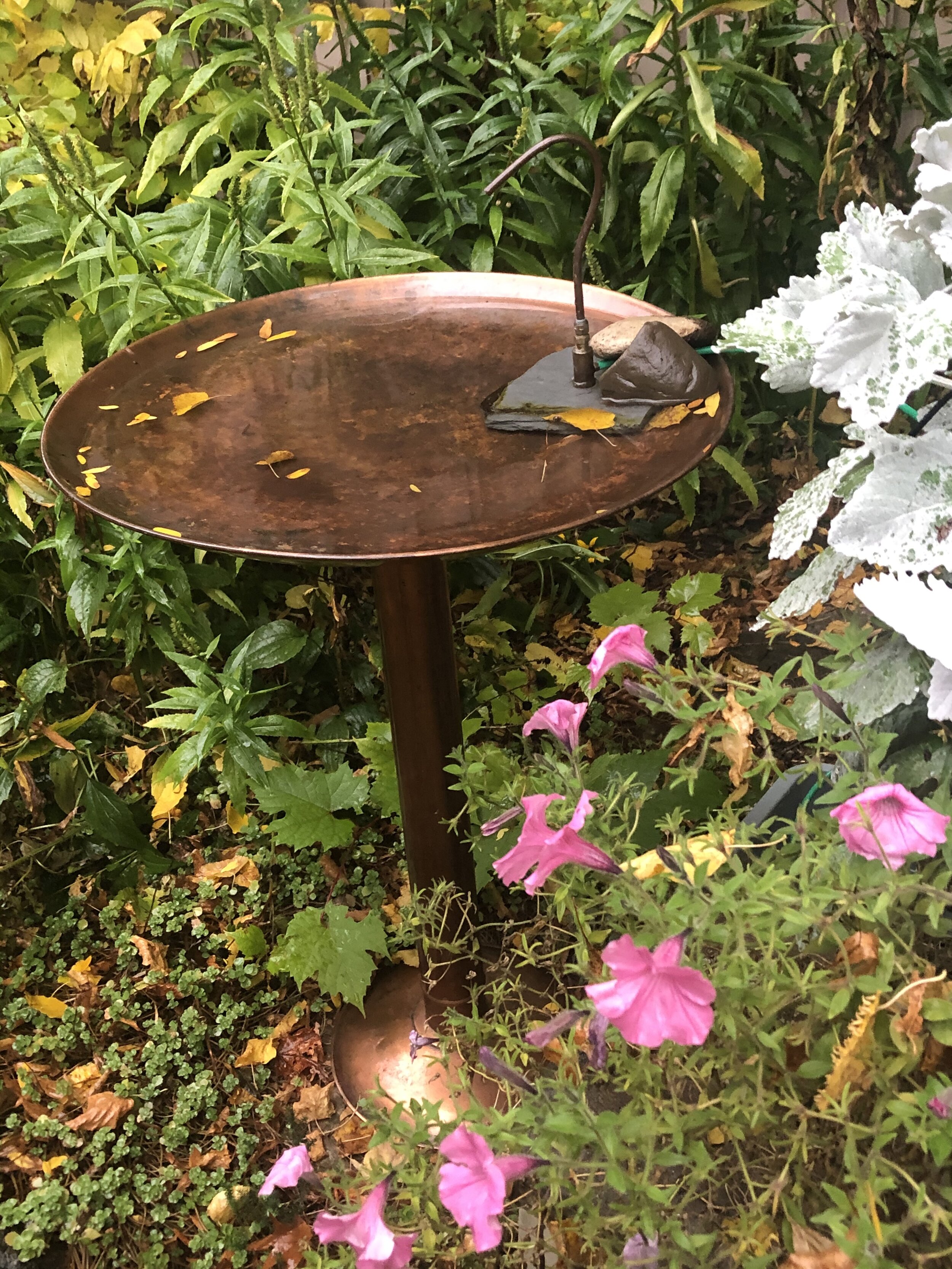Building your garden on a Budget: Invest in these money-saving tips
Creating a garden of your dreams can be expensive, especially if you’re young with children and in your first home. The good news is that you have time to create that woodland, cottage or contemporary garden on a budget you can afford. The keys to a successful landscape plan are patience, the willingness to get your hands dirty and learning the money-saving tips to get you on the right path.
Gardens can be your best investment
I can’t think of a better place to invest time and money than our gardens. Not only do they give us great joy, they keep us healthy, get us out in nature to experience the birds and wildlife and, if done right, increase the value of our homes astronomically.
It’s an investment you just can’t say ‘no’ to.
How do we garden on a budget? First, ensure you are getting a great return on your investment by creating your dream garden on a tight budget always purchasing young trees at great prices, growing your own plants from seeds and dividing theses plants to create even more. Building a budget friendly garden is like investing: Buy cheap and let time build your investment.
This large Japanese Maple in my Japanese-inspired garden was the first tree I purchased when we moved into our home more than 20 years ago. If I remember it was on sale for less than $50. Time has made it a priceless addition to our garden.
20 tips to save money in the garden
Create your garden/landscape on a budget by following these 20 tips.
Buy trees when they are young and inexpensive. Let time increase their value.
Grow perennials and annuals from seed.
After about three years divide your perennials for lot s of free plants
Remove or reduce grass to cut long-term future watering and maintenance costs
Ask relatives, friends and neighbours for divisions of their perennials
Purchase gardening tools such as shovels, wheelbarrows etc used at garage sales, estate sales and sites like Kijiji.
Share the cost of rarely used garden tools with your neighbours. Share a snowblower, High-pressure cleaner, even an lawn mower.
Use weekends to tackle landscaping projects on your own rather than hiring professionals
Look to thrift stores for garden containers, tools, hoses and other garden products
Rent expensive equipment you don’t use often rather than purchase them.
Learn to reuse items in your home and garden as garden art, containers
Consider using solar lights to save on electricity costs
Start a compost heap to save money on soil
Practise xeriscaping to conserve as much water as possible on your property
Ask local tree services for truck loads of free bark mulch
Consider growing your own fruits and vegetables to save grocery bills
Practise low maintenance gardening with native plants that don’t require the same care and costs as many hybrid shrubs, plants and trees
Use large trees to throw shade on your house to reduce expensive air conditioning costs
Take the time to learn garden landscape and maintenance skills such as proper pruning techniques and basic deck or patio construction to save money.
Consider hiring students in the summer to help you tackle major landscaping projects.
For more money-saving tips for your garden, check out my separate post Ten money-saving tips for the weekend gardener.
Most of us are aware that properly landscaped homes can add tens of thousands of dollars to the value of our properties. Real estate agents will tell you that landscaping not only adds value immediately, it actually increases yearly as the landscape matures.
Interior decorating goes in and out of style and eventually is more of a negative than a positive on the value of your home. Landscaping, on the other hand, ages and matures creating both beauty and value that only large trees can offer and only time can create.
Just compare a typical new subdivision with an older, more mature one and it should be obvious how important a well landscaped property and street can transform a neighbourhood.
An article in the Washington Post states that a quick Google search resulted in a variety of results on the return on investment of landscaping. It found numbers ranging from a 100 per cent to about 1,000 per cent return on investment as a result of adding landscaping. With the price of today’s homes, that adds up.
So it’s clear, landscaping is valuable. It can also be expensive. But it doesn’t have to be.
(Curb appeal can pay off big. Check out my article on adding curb appeal to your garden on a budget.)
If we could only come up with a plan to landscape our homes on a budget.
The choices are numerous.
We could do the landscaping ourselves, pay a traditional landscaping company to do it all, or just pay a landscape designer, like Angela Den Hoed of Soil and Ink, to create a design that we (as homeowners) can create over time. The final option is an excellent compromise that allows us to create a professional landscape on a tight budget and do it over a long period of time. This not only helps to spread the cost over ten or even 20 years, it allows us to grow our gardening knowledge along with the garden.
This article, however, is not about landscaping. I want to focus on the soft material (the trees and plants) rather than hardscaping (rocks, paths, decks etc.).
It all begins with trees
What makes me an expert in creating a garden on a budget, you may ask?
Well, I’ve always been a little on the cheap side. Some would call it thrifty, but let’s face it, cheap is a better description. At least in my case.
Of course, a lot of my “cheapness” comes out of necessity. Being a journalist for your entire career is no way to get rich. However, I’ve always believed that if you don’t have a lot, make the best of what you’ve got.
With that in mind I can honestly say that some of the best investments I’ve ever made are in my garden.
For anyone interested in establishing a woodland garden, the most important savings begins with the installation of trees. Depending on the size of your garden, you are likely going to need several trees. Big trees like Maples and Oaks for the upper storey, and smaller ones like serviceberries, Dogwoods and Redbuds for the under storey.
My wife and I were blessed with several large trees on our property when we moved in, including a large Linden, two locusts a pine tree and two maples in the front yard. Because the neighbourhood is mature, we were also able to benefit from a shared landscape, using our neighbours’ trees as part of our overall landscape. This is certainly a huge bonus, if you are lucky enough to benefit from others’ smart landscape choices and one that helps keep your costs in check.
This left us with the task of primarily adding under storey trees as well as larger trees, if a good deal happened to come along.
Trees can be expensive and each year you wait you pay more, get less and, most importantly, lose precious time.
So the Number One tip to budget-friendly gardening is to plant your trees small, but plant them early.
In fact, if you are moving into a new home, make it the first thing you do. Plant at least some of your trees. If you buy them on the small size, they are easy to plant and they will root in more quickly than a larger more mature tree would.
Trees that I purchased years ago and slipped into the back of my old Subaru station wagon are now mature specimens that would be difficult to get on most flatbeds let alone in the back hatch of a car.
My neighbour and I recently planted a cedar hedge between our properties. Several cedars were about 10-footers but the nursery ran out so we had to plants some three foot versions. We planted them in an area that gets more light than the others and in just one year they put on about twice the growth of the larger cedars. By the end of the second year, I expect that most people will be hard pressed to see the difference between the larger cedars and the small ones.
Building a garden on a budget does not have to be difficult. Flowers, for example, can be grown from seed, increased by division, or allowed to reseed themselves and naturalize in our gardens. All for free. The following list are just a few flowers that are almost free for the taking.
Black Swallowtail and purple cone flower.
Flowers easily grown from seeds
• Columbine (aguilegia) – An early summer bloomer known to attract hummingbirds and other pollinators to your garden. It’s a perfect woodland addition but can work in a more meadow environment as well. It will self seed if happy, but feel free to collect the pods after flowering, shake out the seed and spread them into different areas of the garden.
• Yarrow (Achillea) is a hardy, dependable plant with clusters of flowers available in a variety of colours and is a perfect landing spot for butterflys. It can spread quickly and has a long blooming season. The spent flat-topped flowers even look great throughout the winter.
• Allium (Onion family) these rather unique purple round-headed flowers are a very architectural addition to a garden rising up through other vegetation.
• Sweet William or Dianthus is is a biennial or short-lived perennial prized for its small flowers that bloom from late spring to the first frosts of fall. It can grow in hardiness zones from 3-9 and the sweet smelling flower that grows performs well. Sweet William will reseed each year in optimum growing conditions.
• Coneflower (Echinacea) is a favourite of most gardeners with its large, sturdy, long-lasting blooms. A favourite of both pollinators and many birds that depend on the seeds as a food source in the fall and throughout the winter. The birds will help to spread the seed, but capturing it on some of the spent flowers and distributing it in the garden is an excellent way to multiply your plants with little to no work.
• Gallardia (Blanket flower) is a butterfly magnet with its daisy like yellow, orange, or red flowers creating an enticing landing pad for them.
• Shasta daisy add a joyful feel to your garden with their bright white flowers and lemon yellow centers. Easily grown from seed or division.
• Lupine (Lupinus) is a longtime favourite in gardens. The tall and showy spikes of the lupine comes in purple, pink, yellow, red and white but look for the native lupine which is smaller and blue in colour and the host plant for our threatened Karner blue butterfly.
•Penstemon (beardtonque) Stalks of tubular flowers (pollinators and hummingbirds) that begin blooming in early summer.
• Black-eyed Susan (Rudbeckia hirta) is a popular tough-flowered perennial that performs from late summer into first frost and is a great late winter food source for birds. If given time, these plants will spread on their own and create lovely drifts but you can help them along by gathering some of the seeds and distributing in various locations that are crying out for a little late-summer colour.
Wild geranium and ferns. Not only is it a stunning plant, it spreads beautifully providing free plants and creating a lovely ground cover that is attractive to bees and other pollinators.
Let patience work for you
When it comes to gardening. saving money is really about patience.
• Patience to plant a seedling or a young whip and watch it grow into a beautiful tree.
• Patience to tackle as many garden landscape projects as possible on your own.
• Patience to wait for the garden to mature over time.
• Patience to buy one plant rather than five knowing that, in three years, you are going to split into a grouping of three or maybe even five.
• Patience to spend time on used sites such as Kijiji to score garden items at a fraction of the price you would if you had bought them as new items.
• Patience to grow some of your favourite plants from seed.
• Patience to wait until fall to pick up that expensive Japanese Maple on sale at 50-60 per cent off.
• Patience to let nature do its job, while you continue to work toward the garden of your dreams.
Let’s face it, patience is definitely a virtue when it comes to gardening.
And, one of the great benefits of gardening is that if you start young, and have patience, both your knowledge and savings grow exponentially.
I remember shortly after moving to our current home, say some 20 plus years ago, and seeing a small notice in our daily paper from an environmental group advertising two free native trees for anyone interested providing you could pick them up. My trusty Subaru station wagon came in handy again. I arrived to see a forest of trees being offered for free. And they weren’t little whips either, they were good-sized trees.
I picked up a tulip tree (a fast growing Carolinian zone native tree), and a single-stem native serviceberry. Both are now mature specimens. The tulip tree is probably four-storeys high and the serviceberry is an outstanding addition to our front yard attracting a host of birds, chipmunks and squirrels every summer when the fruit ripens after the tree’s spectacular spring bloom of ethereal white flowers in May.
That was entirely an investment in time and a little energy planting them. But, I was young then and had lots of time and energy.
More recently, I remember buying three weeping birch tree whips for $9 each maybe 10 years ago. I have long since forgotten what they were called but they appear to be a variety of tall, slim weeping birch trees named Royal Frost with burgundy leaves on the traditional white trunks. It has taken a number of years for the trunks to turn white, but we now have three lovely, unusual birch trees that are only getting better with age. They are planted in the front of our property in a nice grouping that provides some privacy, but more importantly gives our local bird population a place to rest while they sing outside our family room windows.
These specimens, after about ten years of growth are priced in the $200 a tree category. Of course that does not include the cost of delivery and planting, since these trees are now probably too large for me to plant on my own. That $200 tree with delivery and planting is going to cost $300-$350. Multiply that number by three and you are looking at about $1,000.
That $30 investment is looking pretty good now isn’t it?
If we learn anything from these examples, it is not to wait until you have the money to create the garden of your dreams. Buy those trees now, plant them now, and be patient.
Important lesson: Don’t buy a tree simply because it’s on sale, buy it because it fits into your plan. Have a good idea of the type of trees you want and then start your search.
Places to purchase trees on a budget
• “Big box” stores have been a source of some rather interesting deals for me. I like to visit their garden centers in the spring to check out what they are carrying that year. Regular visits throughout the summer waiting for sales have paid off several times, especially with native trees that most “big box” garden shoppers are not familiar. I have scored several flowering dogwoods (Cornus Florida both red- and white-flowered varieties) and a Redbud (Forest Pansy) for 80 per cent off at the end of summer sales. The highly-valued native specimens cost me about the same as a decent-sized perennial would cost in spring.
• High-end garden nurseries are traditionally not the place to get your best deals, but pay attention in the spring and fall when sale prices can get you some less common trees that you would never see in the “big box” outlets or traditional nurseries. Spring is the time to grab last year’s stock that might not look appetizing to most spring shoppers. My favourite local garden nursery has an area in the back full of “ugly” plants and trees that will work perfectly in a woodland setting, especially at 80 per cent off. I have picked up some rare Japanese Maples for 80 per cent off as well as some beauty bushes that they were almost giving away because there were no tags on them. I happen to recognize them right away and scored them for pennies on the dollar.
• Local Garden Club fundraising sales are a must. Obviously, flowers are a bigger draw for most who attend the local sales, but I head straight to the back where the trees are usually stored. Native trees are often in the pack because shoots from their fruit can sprout up from around mother trees and are a great way for the local gardeners to make a few dollars rather than put them in the compost heap. Serviceberry, Pagoda Dogwood, and Redbud are just a few of the trees you can expect to score for the cost of a couple of coffees for a smaller tree, or a couple of burgers for a good-sized specimen. A bonus to buying at the local Garden Club is that you know the tree was already growing and prospering in your neighbourhood. Don’t be scared off if the tree looks like it’s struggling. Chances are it was dug out of it’s comfortable garden home the night before and is in a little shock. Plant it quickly give it some love and it should do fine after a period of getting acquainted with its new environment.
• Kijijij and Craigs list can also be a source of trees. Believe it or not there are more trees on Kijiji than you might think. And lots of them are great deals. I picked up a white pine for $10 from a woman who was growing it in a container until it started to get too big. I picked up a Serbian Spruce that the woman decided was going to get too big for her yard and I’ve seen homeowners willing to give away beautiful Japanese Maples for anyone willing to come and dig them up and cart them away in a truck. Trees that would cost hundreds if not thousands are free for the taking with a little effort. Again, it helps to be young or, at least know some strong young folks.
• A lot of people simply steal their trees from nature. This is rarely a good idea, especially if you are travelling a great distance to obtain the trees in a different growing area. (See my article on why taking trees and plants from nature is wrong here.) Chances are, you will damage the roots to an extent that will eventually lead to the death of the tree. There are times, however, when “saving trees” that are “standing in the way of progress” can be a good idea. In cottage country, for example, if trees are being threatened to make way for a road, a cottage or resort. With permission, this can be an excellent way to gather a number of trees. Don’t be tempted to take the largest ones possible, however, the smaller ones will have a much better chance at survival.
Our fern glen started with just a few ferns donated from a friend and spread to encompass a huge area of a corner of the garden. Deer will often hide their fawns in the ferns for the day. A great example of using free plants and patience to create a stunning area in your garden.
Plants for pennies with a little planning
Let’s face it, who is paying for plants these days?
Answer: Too many of us.
We all fall in love with the latest and greatest hybrids from the major plant growers. We can’t live without the latest golden variegated hosta, or the triple petunia. That miniature shrub is so much better than the large one I have growing in the back.
I get it, there is a time when we need to treat ourselves with that special plant, but, in the meantime, we can take action to save some serious coin on the rest of our garden plants. If we make a solid effort to save on most of our plants, we can afford to splurge on a couple of favourites every year.
This small Morning Glory was raised from seed scattered into the container in early spring. Morning glory is easily raised from seed adding a colourful climber to your garden for pennies.
But do yourself a favour, focus on perrenials not annuals.
Over the long haul, you’ll save a small fortune by making perennials the stalwarts in your garden design. Use the annuals for hits of colour, in planters and hanging baskets.
Perennials can be grown from seed, shared between friends, split every three to five years to create more plants, and, if left to reseed themselves, can be multiplied by doing a whole lot of nothing. That, as financial consultants would say, are dividends working hard for you.
Penny pinching your perennials
• Grow your favourite perennials from seed you get from friends, relatives or maybe a seed or two from the plants at your favourite nursery in the fall. Most people have no problem offering you seeds from plants in their gardens.
• Divide and divide again to create more plants. Most plants need to be divided every three to five years when their centers begin to die out. Division works for most perennials including grasses, hostas, black-eyed susans, and ground covers like Sweet Woodruff, Lillies of the Valley, Pachysandra, Stonecrop, Snow in Summer and the list goes on.
• Trade your divisions with neighbours, friends and family. This works really well for ground covers and plants like hostas where you can never get too many varities.
• Let Mother Nature bring flowers to you. Look for native wildflowers that have been left behind by birds, animals or even just wind blowing seeds around. Milkweed is a perfect example of a native wildflower that readily seeds in your garden if you let it. the fact that it is the host plant for monarch butterflies should make it a prized volunteer to any garden.
• Do you have a favourite perch that birds congregate on? If not, consider stringing a clothes line across an area of the garden where there is open soil and let the birds sow the garden for you. You might be surprised with the results. You will certainly find out soon enough what they are eating in your neighbourhood and you can rest assured the plants that will emerge from the seeds will be appreciated by your feathered friends.
This patio pond container was one of several Kijijji finds at a fraction of the cost of a new one. It has performed flawlessly for years and one of my favourite additions to the garden allowing me to grow a few pond plants without having to deal with a full backyard pond.
Buying used tips that you can take to the bank
Many years ago, I decided buying used was one way I could get many of the things I dreamed of but could never afford. It wasn’t just plants, or garden related objects – it became a way of life.
My photography equipment was and still is all pretty much used. My cars have always been used. Heck, when we purchased our house it was very used, almost worn out. My wife and I even joke that we got our cats and dogs used from the local shelters.
I’m happy to take other people’s throwaways. I can’t help it if they have a fetish for the latest and greatest. I’m happy with yesterday’s latest and greatest, especially when it’s of extremely high quality, high value and meets my needs.
(Check out my best Kijiji birding finds here.)
Anyhow, in the gardening world, old is always better than new.
In fact, you can expect to pay big bucks for the fake patina on that plastic garden ornament. Or, you could just buy the old concrete one on Kijjiji for a fraction of the price and that live lichen growing on the base of the bird bath gets thrown in for free.
“I can’t think of a better place to invest time and money than our gardens. Not only do they give us great joy for years and years, they keep us healthy, get us out in nature to experience the birds and wildlife that call our gardens home, and through smart decisions, increase the value of our homes astronomically. It’s an investment you just can’t say no to.”
You would be surprised what you can find for your garden in the world of digital classified ads.
To date I’ve purchased copper bird baths from Restoration Hardware at pennies on the dollar, a rustic bird house I’m in love with, a large concrete water container that has served as our patio pond for several years, trees, garden art, bird feeders, owl houses…. the list goes on.
If you are looking for garden tools, you will find a nice selection usually from elderly couples moving into condos and apartments who have no need for lawn mowers, hoes and clippers. No need to spend three months pay on garden tools that get scratched and beat up after only a few uses.
Once again, it’s all about patience. You may not always find what you want at that moment. Make a list of some of the tools you will need and keep checking. The listings change daily, even hourly so as long as you are patient, you will likely find what you need.
Pay attention in spring and fall when gardeners are looking to do some serious cleaning. That’s when most of the best deals are available.
One last personal example.
This lovely copper bird bath was found on Kijijiji as well as the copper dripper that was turned into a solar fountain to create moving water and attract birds. Both the bird bath and the dripper were purchased for pennies on the dollar.
Several years ago I needed a few square cut blue flagstones for a project. I found a fellow in the next city over selling flats of this expensive flagstone after removing a patio from his backyard. (Don’t ask me why he would remove a blue, square cut flagstone patio in favour of a concrete pad, but one man’s poor taste is another’s gold mine.)
I could have purchased a few pieces of the flag stone from our local garden centre for a little less than I paid for an entire pick-up truck of the flagstone but I decided I could always find a use for it so I took the enire load.
I stored it nicely stacked behind our shed until last year when I used every last piece on a major landscaping remodel.
I would hate to think how much square cut blue flagstone is priced at these days. I wonder how the fella likes his concrete pad, I know I love our flagstone stepping stones through the woodland.
There is a reason the saying: A penny saved, is a penny earned continues to be as true today as it was when we were kids. Although it should now probably read: a penny saved, is ten dollars earned.
Consider installing a high-end, off-grid solar power system
If you are like me and don’t have electricity in your garden, or at least don’t have it in the far reaches of the garden, consider installing a complete off-grid solar-powered electrical system like the American-based Shop Solar Kit company.
Maybe you have a pergola in the back of the garden, or even a she-shed that you would like to have full power running a small refrigerator, sound system or full-size lamps and lighting. If you need to run pumps and lighting to a garden pond, you can do it with one of these highly capable systems that, once installed, operate at no cost to you at all.
There are complete DIY kits available for approximately $1,500 and up.
Gardening on a budget links
Ten money-saving tips for the weekend gardener
DIY Bark Butter feeder for Woodpeckers
DIY reflection pond for photography
Click & Grow is ideal for Native Plants from seed
Remove your turf and save money
Hiring students to get your garden in shape
This page contains affiliate links. If you purchase a product through one of them, I will receive a commission (at no additional cost to you) I try to only endorse products I have either used, have complete confidence in, or have experience with the manufacturer. Thank you for your support.

